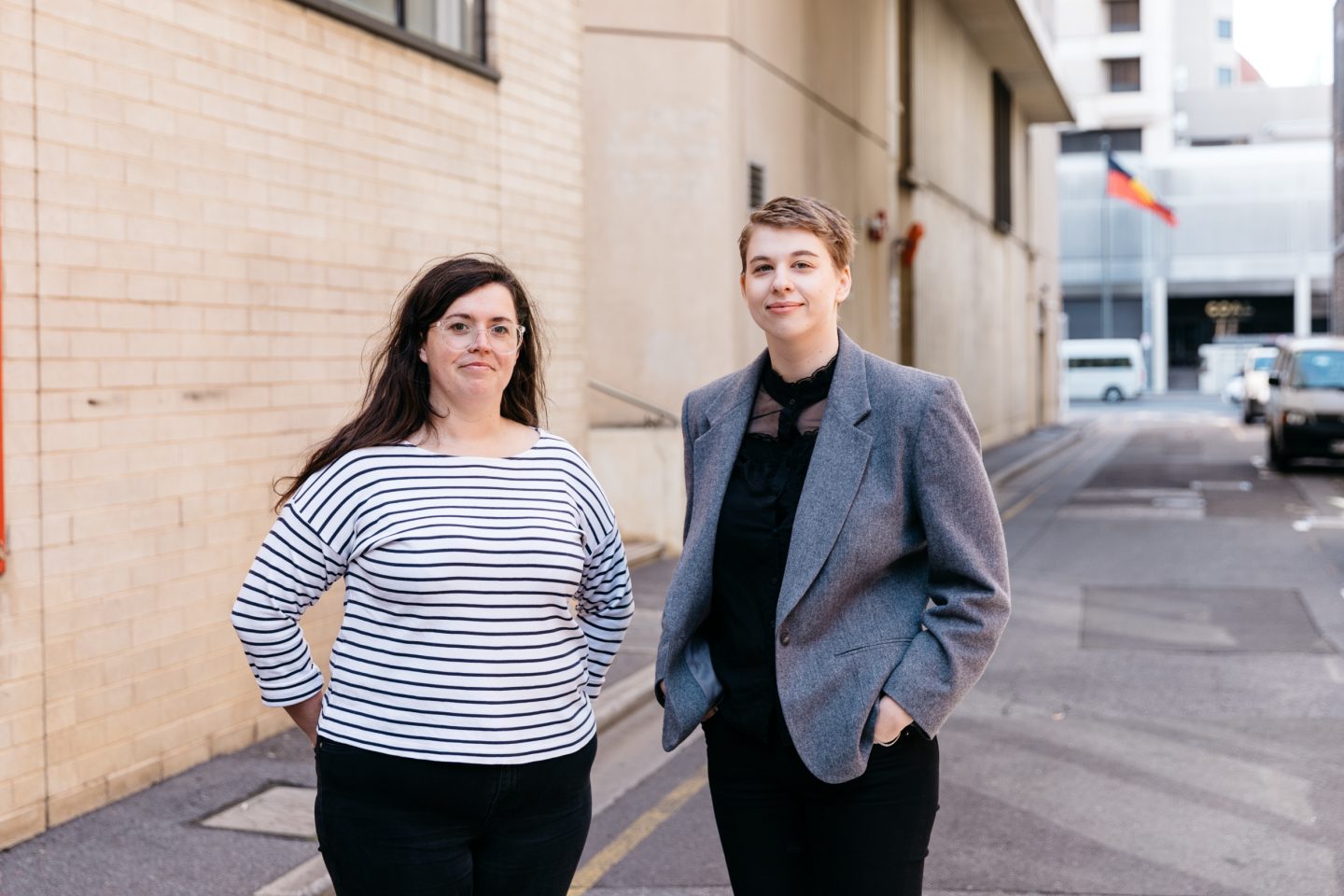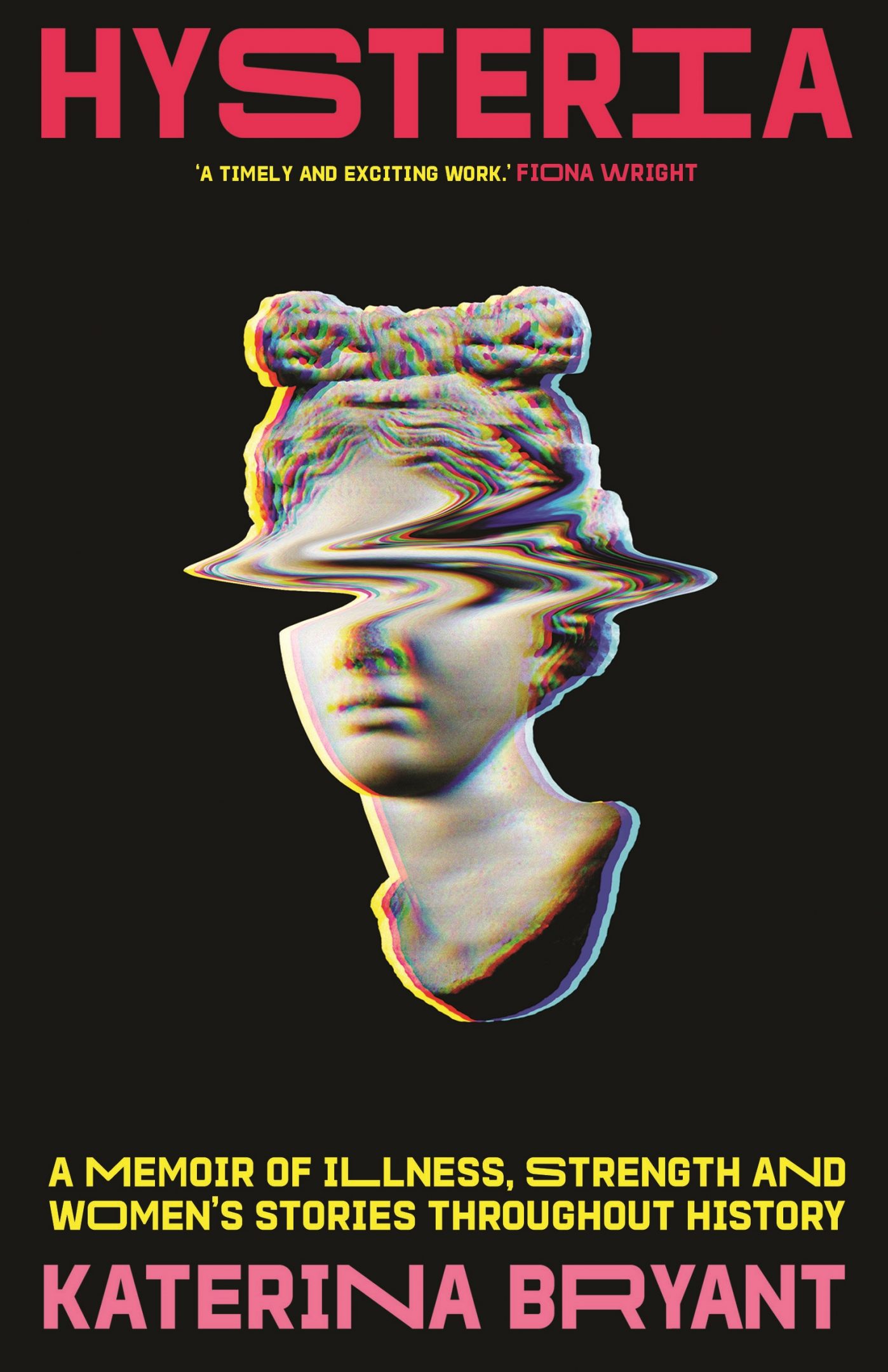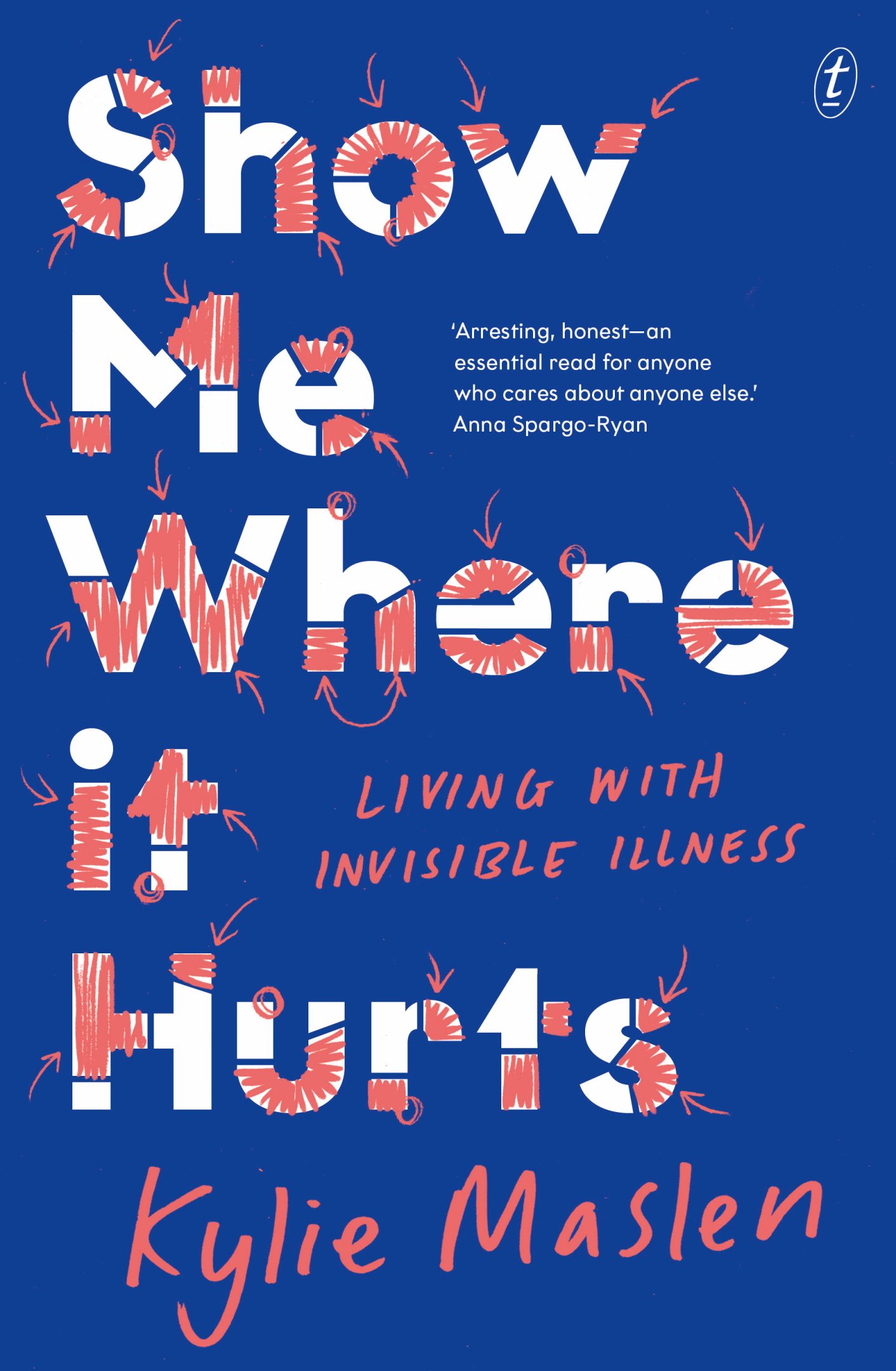
Kylie Maslen
Kylie Maslen is a writer and critic from Kaurna/Adelaide, and the author of Show Me Where it Hurts: Living with Invisible Illness (Text Publishing).

After a year of COVID-reshuffled publication dates, two Adelaide authors – Katerina Bryant and Adelaide Review writer Kylie Maslen – find themselves in the unusual position of both having debut books, which share their lived experiences with chronic illness, hitting shelves in September.
Katerina Bryant’s Hysteria is a memoir exploring her chronic mental illness – with seizures whose origins are unknown – through the ways women have historically been treated by the world of medicine. My own book, Show Me Where It Hurts, uses pop culture references and my own personal experiences to build a narrative of living with invisible illnesses, in my case primarily endometriosis and complex mental illness. With our shared date approaching, we sat down to discuss the ways our books, and lives, overlap.
“I wrote the book [as] I was living through the experience,” Bryant says of her motivation for writing such a highly personal book. “Because of the nature of my illness, I couldn’t leave the house to do much except for one shift a week that would cover my rent and bills. So I wrote to feel useful, because I was still living with the ableist idea that my worth was tied to my productivity. So, it came very quickly in that sense. I was writing it for myself, to kind of process what was happening, and it eventually became a book from that. How about you?”
I had two reasons for writing Show Me Where It Hurts, I tell Bryant. I wanted to write the book knowing how much I would have benefited from having something similar available to me however many years ago. I also had a desire to help the people around me and, in turn, the people around other people with invisible illness understand. I often struggle to articulate what’s happening, how I feel, and what is actually useful for people to do for me, and I’m really bad at pushing away help. If I could make readers understand, they could then help other people who similarly find it really hard to verbalise what they are dealing with.
Both of our core illnesses have a history with the notion of ‘hysteria’, a word Bryant describes as “a fluid diagnosis” that even today conjures “an image of a shaking, manic woman”. While that name is no longer in use, it still very much informs a lot of medicine today. I ask Bryant how she came to use the term as a narrative, and place that history within her own illnesses.


“When the phrase Psychogenic Nonepileptic Seizures was first used as a possibility to describe [what was happening to] me, I learnt within the first google search the history of where that [term came] from,” she says. “Which, at the time, was incredibly concerning and made me feel quite uneasy. I think that’s because the perception of the word is from a male perspective to categorise predominantly women.
“Then, after reading more and more about hysteria, when I was able to see the women behind that word – their experiences and their strength – I felt more comfortable with it. I was able to think through what it means, and in a certain way it’s meaningless because it doesn’t actually define anything. But [those stories] show the strength of those who lived with that label.”
“I feel closer to having an understanding, but I feel further away from the desire to have a concrete label and to be ‘cured’, I suppose, because I know that’s not happening.”
Katerina Bryant
Early in the book, Bryant writes that she tried ”to read [her] way to an answer” as to where the seizures came from. Having found more answers about the impact of illness on my life through pop culture than doctors and medical journals, this certainly connected with my own experience. Did writing Hysteria bring her any closer to an answer?
“I feel closer to having an understanding, but I feel further away from the desire to have a concrete label and to be ‘cured’, I suppose, because I know that’s not happening.
“It’s interesting you talk about alternative ways of building an understanding through pop culture. I was also really interested in the diversity of pop culture that you look to, from art to music to SpongeBob SquarePants. I love those different layers,” she says. “Did you make the decision to explore all realms early on, or did that come naturally?”


There were some times where the material came first, I explain. Watching Marie Bamford’s Netflix comedy Lady Dynamite was one instance that helped to inform things later. There were also times where I went looking for examples that went outside of traditional narratives – I felt like all I had come across was ‘sick-lit’ stuff, and there were only a few examples where I thought, ‘oh that’s actually more true to my experience’.
There were also subjects that I knew I wanted to cover – housing was something I really panicked about for a long time, and dating with illness is fraught. But what ended up happening is that in putting it all together, I found this narrative progression from not having the language to explain things that were happening, to me to finding those words or ideas in pop culture.
At their heart though, I feel both our books are about empathy. Would Bryant agree?
“Yes,” she says. “Empathy and understanding and care. I think within that we both really think about what it means to live a good life and how to build that for yourself in quite concrete ways. I think a natural consequence of living with illness is really thinking through those decisions – which is something I think everyone should do – but when you have limited energy it becomes a greater priority.”
“Living with chronic illness is not a way of life that I would have chosen for myself by any means, but to look at one positive, I live a more sustainable life in a myriad of ways. Everything is intentional now, because I’ve had to think everything through.”
Kylie Maslen
You literally have less time for bullshit, I joke, there’s just no capacity for it. Living with chronic illness is not a way of life that I would have chosen for myself by any means, but to look at one positive, I live a more sustainable life in a myriad of ways. Everything is intentional now, because I’ve had to think everything through. Sometimes that’s difficult with bipolar, but for the most part you really have to think about the people that are in your life, the work that you’re doing, the way you interact with people, and how you approach physical spaces.
“And you’re hyper aware of the decisions that bring you joy, and bringing those to life more,” Bryant adds. “Because I don’t think either of us are under the illusion that things will be better with time.
“Especially with pain management – that idea of living within the moment and trying not to think too far ahead, just accepting what comes and trying to work through that is a valuable lesson… if a difficult one to learn.”

Kylie Maslen is a writer and critic from Kaurna/Adelaide, and the author of Show Me Where it Hurts: Living with Invisible Illness (Text Publishing).